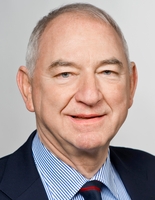Max-Planck-Institut für Plasmaphysik (IPP)
Mitarbeiterinnen und Mitarbeiter der Arbeitsgruppe
Wissenschaftlerinnen und Wissenschaftler
| Photo | Akad. Grad | Vorname | Nachname | Raum | Telefon | |
|---|---|---|---|---|---|---|

|
B.Sc. | Daniel | Wendler | – | – |
Andere Mitarbeiterinnen und Mitarbeiter
| Photo | Akad. Grad | Vorname | Nachname | Raum | Telefon | |
|---|---|---|---|---|---|---|

|
Prof. Dr. | Alexander | Bradshaw | – | – | |

|
Prof. Dr. | Sibylle | Günter | – | +49 89 3299 1342 | |

|
PD Dr. | Klaus | Hallatschek | – | +49 89 3299 1391 | |

|
PD Dr. | Philipp | Lauber | – | +49 89 32991353 | |

|
Prof. Dr. | Rolf | Wilhelm | – | – |
Lehrangebot der Arbeitsgruppe
Lehrveranstaltungen mit Beteiligung der Arbeitsgruppe
Abgeschlossene und laufende Abschlussarbeiten an der Arbeitsgruppe
- Experimental investigation of the linear and non-linear EGAM dynamics in ASDEX-Upgrade experiments
- Abschlussarbeit im Masterstudiengang Physik (Kern-, Teilchen- und Astrophysik)
- Themensteller(in): Philipp Lauber
- Studies of Collision Operators and Applications in Tokamak Plasmas
- Abschlussarbeit im Masterstudiengang Physics (Applied and Engineering Physics)
- Themensteller(in): Philipp Lauber